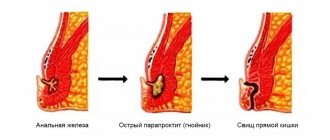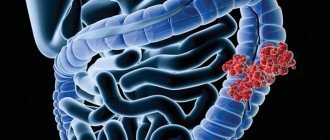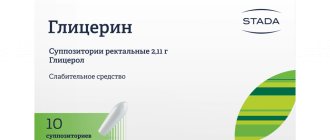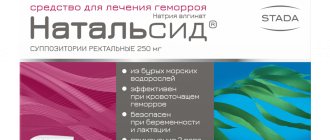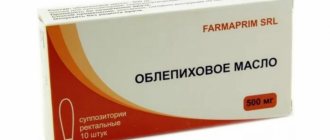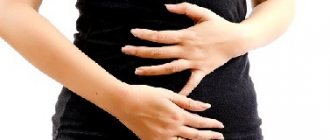Home / Endoscopy / Sigmoidoscopy
Sigmoidoscopy (rectoscopy) is a method of endoscopic examination of the rectum and distal sigmoid colon by examining their internal surface using a sigmoidoscope inserted through the anus.
- Sigmoidoscopy is the most common, accurate and reliable method for examining the rectum and lower sigmoid colon.
In the practice of a coloproctologist, sigmoidoscopy is a mandatory component of every proctological examination.
- This study allows you to visually assess the internal surface of the rectum and distal third of the sigmoid colon to a level of 20-35 cm from the anus.
Rectoscopy, performed for preventive purposes, is becoming increasingly widespread. As a preventive measure for the early diagnosis of malignant neoplasms of the rectum, people over 40 years of age are recommended to undergo sigmoidoscopy once a year.
With skillful use of a rectoscope, this procedure is painless or slightly painful and does not require preliminary anesthesia.
Contraindications to sigmoidoscopy
There are practically no contraindications to examining the intestine through a sigmoidoscope..
However, in some conditions and diseases, the study is postponed for some time (for example, during a course of conservative therapy) or is performed with great caution with the patient in gentle positions or after anesthesia.
Such diseases include:
- profuse bleeding from the intestine,
- narrowing of its lumen of a congenital or acquired nature,
- acute inflammatory diseases of the anal canal and abdominal cavity,
- acute fissure of the anal canal.
Sigmoidoscopy under sedation
A preventative bowel examination is usually painless and does not require the use of painkillers. If polyps are detected and there is a need to take a biopsy and perform other microsurgical procedures, the doctor uses local anesthesia. This is enough so that the patient does not experience discomfort.
In some cases, it is also possible to use intravenous anesthesia, or drug-induced sleep. The examination takes the same 15–20 minutes, after which the patient is woken up, and he completely returns to his normal life in about an hour and a half. Intravenous anesthesia is not anesthesia, so there are no side effects such as nausea, vomiting and dizziness. Despite this, after diagnosis the patient is not recommended to drive or return to work that requires concentration.
Sigmoidoscopy technique
- To undergo the examination, you will need to remove all clothing from the waist down, including underwear, and then be assisted on a couch on all fours.
- Sigmoidoscopy is performed only after direct digital examination of the rectum.
- Sigmoidoscopy with rigid tubes is usually performed in the knee-elbow position of the patient. This position is very convenient for examination: the anterior abdominal wall seems to sag a little, which makes it easier to pass the tube from the rectum to the sigmoid colon.
- The assembled sigmoidoscope, after checking the operation of the lighting system and lubricating the tube with Vaseline or a special gel, is inserted into the anus along the longitudinal axis of the anal canal to a depth of no more than 4-5 cm.
- Then the obturator is removed, and all further sigmoidoscopy is performed only under visual control.
The tube is passed so that its edge does not rest against the intestinal wall, but follows strictly along the intestinal lumen, while air is constantly pumped into the intestine.
What does sigmoidoscopy diagnose?
Normally, the mucous membrane of the sigmoid colon is an intense pinkish color, with semicircular folds and pits. The mucous membrane of the rectum looks red, as it has a well-developed vascular network. The border between the rectum and the anal canal is purple. The lower part of the anal canal is gray-brown in color and extends into the skin of the perianal area, where the hair is located.
Sigmoidoscopy allows you to diagnose the following diseases:
- prostate adenoma in men, rectal endometriosis or retrocervical endometriosis in women;
- hemorrhoids, both external and internal;
- ulcerative colitis;
- chronic paraproctitis;
- rectal fissure;
- polyps of the rectum and sigmoid colon;
- enlarged anal papilla;
- malignant tumor of the intestine;
- anal fistulas;
- anal rectal abscess.
Preparation for sigmoidoscopy
An important condition for performing sigmoidoscopy is thorough cleansing of the colon from contents.
- On the eve of rectoscopy, the patient is prescribed a low-slag diet during the day, and only tea in the evening. The study is carried out on an empty stomach.
- To prepare the intestine for examination, it is cleaned using enemas (1.5-2 liters of plain water at body temperature). It is advisable to do the first enema the evening before the examination; approximately 3-4 hours before the examination, 2 more enemas are given with a 45-minute break.
- For enemas, use only water from a proven source (one that is safe to drink). For children, it is better to use only boiled water. The water temperature is about 37-38 degrees. Colder water significantly increases intestinal motility and causes unpleasant pain. Using water with a temperature of more than 40 degrees for an enema is dangerous to health.
Types of rectoscopy:
Anoscopy
During anoscopy, a small hose called an anoscope is used for diagnosis. Thanks to it, it is possible to inspect the area of the last 5 cm of the anal canal. The examination can be carried out at any time; special bowel cleansing is not required.
Proctoscopy
To study the condition of the rectum, proctoscopy is performed. Using a proctoscope, consisting of a hose 8-15 cm long and a magnifying optical system, the proctologist can see the anus and the area of the lower intestine. Before proctoscopy, you need to drink a laxative or do an enema to cleanse the intestines.
Sigmoidoscopy
Sigmoidoscopy allows you to examine the sigmoid intestine, collect material for a biopsy and detect colon cancer at an early stage. For this study, a light, long and flexible hose is used - a sigmoidoscope. Before the examination, you should follow a diet consisting of broth and liquid for 1-2 days.
1 Preparing the device for rectoscopy
2 Preparing the device for rectoscopy
3 Preparing the device for rectoscopy
Sigmoidoscopy in children
Indications for sigmoidoscopy in children are:
- bleeding from the lower parts of the digestive tract of varying intensity and frequency,
- symptom of incomplete bowel movement,
- prolapse of tumor-like formations, hemorrhoids, and intestinal walls.
With the help of sigmoidoscopy it is possible to recognize:
- nonspecific ulcerative colitis,
- acute and chronic proctosigmoiditis,
- developmental anomalies of the distal colon, tumors and other pathological processes.
Contraindications are:
- diffuse peritonitis, pronounced inflammatory changes in the anal and perianal area,
- significant degree of narrowing of the anus.
Preparation for the study includes a cleansing enema the evening before the study and in the morning 11/2-2 hours before the study. In case of intended endoscopic interventions, the same preparation is indicated as for colonoscopy.
The sigmoidoscopy technique in children of the older age group does not differ compared to adult patients.
For young children, sigmoidoscopy is performed under general anesthesia, in the supine position. Pay attention to the condition of the mucous membrane - its color, the nature of the surface, shine, vascular pattern, the presence of overlaps, the severity of haustration.
To perform sigmoidoscopy in children, special children's rectoscopes with replaceable tubes of different diameters and a set of instruments for endoscopic interventions are used.
Sigmoidoscopy (rectoscopy)
Sigmoidoscopy (rectoscopy) is a method of endoscopic examination of the rectum and distal sigmoid colon by examining their internal surface using a sigmoidoscope inserted through the anus.
Sigmoidoscopy is the most common, accurate and reliable method for examining the rectum and lower sigmoid colon. In the practice of a coloproctologist, sigmoidoscopy is a mandatory component of every proctological examination. This study allows you to visually assess the internal surface of the rectum and distal third of the sigmoid colon to a level of 20-35 cm from the anus.
Rectoscopy, performed for preventive purposes, is becoming increasingly widespread. As a preventive measure for the early diagnosis of malignant neoplasms of the rectum, people over 40 years of age are recommended to undergo sigmoidoscopy once a year.
With skillful use of a rectoscope, this procedure is painless or slightly painful and does not require preliminary anesthesia.
Contraindications
There are practically no contraindications to examining the intestine through a sigmoidoscope. However, in some conditions and diseases (profuse bleeding from the intestine, narrowing of its lumen of a congenital or acquired nature, acute inflammatory diseases of the anal canal and abdominal cavity, acute anal fissure), the study is postponed for some time (for example, during a course of conservative therapy) or is performed with great caution when placing the patient in gentle positions or after anesthesia.
Sigmoidoscopy technique
To undergo the examination, you will need to remove all clothing from the waist down, including underwear, and then be assisted on a couch on all fours.
Sigmoidoscopy is performed only after direct digital examination of the rectum. Sigmoidoscopy with rigid tubes is usually performed in the knee-elbow position of the patient. This position is very convenient for examination: the anterior abdominal wall seems to sag a little, which makes it easier to pass the tube from the rectum to the sigmoid colon.
The assembled sigmoidoscope, after checking the operation of the lighting system and lubricating the tube with Vaseline or a special gel, is inserted into the anus along the longitudinal axis of the anal canal to a depth of no more than 4-5 cm. Then the obturator is removed, and all further sigmoidoscopy is performed only under visual control. The tube is passed so that its edge does not rest against the intestinal wall, but follows strictly along the intestinal lumen, while air is constantly pumped into the intestine.
When performing sigmoidoscopy, attention is paid to the color, shine, moisture, elasticity and relief of the mucous membrane, the nature of its folding, features of the vascular pattern, the presence of pathological changes, as well as to evaluate the tone and motor function of the examined sections.
When performing sigmoidoscopy, attention is paid to the color, shine, moisture, elasticity and relief of the mucous membrane, the nature of its folding, features of the vascular pattern, the presence of pathological changes, as well as to evaluate the tone and motor function of the examined sections.
Complications
Sigmoidoscopy is a safe procedure. Complications (perforation of the intestinal wall, etc.) with methodically correctly performed rectoscopy are extremely rare. In case of perforation of the rectum, emergency surgery is indicated.
Preparation for sigmoidoscopy
Option #1
An important condition for performing sigmoidoscopy is thorough cleansing of the colon from contents. On the eve of rectoscopy, the patient is prescribed a low-slag diet during the day, and only tea in the evening. The study is carried out on an empty stomach.
To prepare the intestine for examination, it is cleaned using enemas (1.5-2 liters of plain water at body temperature). It is advisable to do the first enema the evening before the examination; approximately 3-4 hours before the examination, 2 more enemas are given with a 45-minute break.
An Esmarch mug is used to perform a cleansing enema. It can be bought at almost any pharmacy
An Esmarch mug is a reservoir (glass, enamel or rubber) with a capacity of 1.5-2 liters. At the bottom of the mug there is a nipple onto which a thick-walled rubber tube is placed. For a rubber reservoir, the tube is its direct continuation. The length of the tube is about 1.5 m, the diameter is 1 cm. The tube ends with a removable tip (glass, plastic) 8-10 cm long. The tip must be intact, with smooth edges. It is preferable to use plastic tips, since a glass tip with a chipped edge can seriously injure the intestine. After use, the tip is washed well with soap under running warm water and boiled. Next to the tip on the tube there is a tap that regulates the flow of fluid into the intestines. If there is no tap, it can be replaced with a clothespin, clamp, etc.
For enemas, use only water from a proven source (one that is safe to drink). For children, it is better to use only boiled water. The water temperature is about 37-38 degrees. Colder water significantly increases intestinal motility and causes unpleasant pain. Using water with a temperature of more than 40 degrees for an enema is dangerous to health.
One way to perform an enema is as follows. Lie on the bed close to the edge on your left side with your legs bent and pulled towards your stomach. Place an oilcloth (plastic film) under your buttocks, and lower the free edge of it into a bucket in case you cannot hold water. Pour 1-1.5 liters of water at room temperature into Esmarch's mug, lift it up to a height of 1-1.5 m and lower the tip down to release a small amount of water and along with it air from the tube. Fill the tube (drain some liquid from the tube), then, without lowering the mug, close the valve on the rubber tube. Check if the tip is broken, lubricate it with Vaseline (soap, vegetable oil) and, spreading the buttocks, insert the tip into the anus with light rotational movements. The first 3-4 cm, insert the tip towards the navel, then another 5-8 cm - parallel to the tailbone. If there are obstacles and the tube rests against the intestinal wall or hard feces, remove it 1-2 cm and open the tap. Pressurized water will enter the large intestine. Almost immediately there will be a feeling of “fullness” in the intestines and an urge to stool. At these moments, you need to reduce the flow rate of liquid from the mug by closing the tap on the tube or squeezing it. Gentle circular stroking of the abdomen will help reduce discomfort.
If the tip is clogged with feces, it should be removed, cleaned and reinserted. If your rectum is filled with stool, try flushing it out with a stream of water. Esmarch's mug does not need to be completely emptied. Leaving a little water at the bottom to prevent air from entering the intestines, close the valve that regulates the flow of liquid and remove the tip. Place a pre-prepared pad (cloth, repeatedly folded toilet paper, etc.) on the perineum, which must be pressed between the legs.
Option No. 2
Preparation for colonoscopy with the drug “Fortrans” (France). The drug "Fortrans" is intended for preparing the gastrointestinal tract for diagnostic studies (including colonoscopy and irrigoscopy) as well as for surgical interventions on the intestines.
The required degree of cleansing of the large intestine is achieved:
- no cleansing enemas
- without additional laxative intake
- without long-term adherence to a slag-free diet
- without outside help
- without abdominal pain and excessive gas formation
The drug solution has a fruity taste. This type of preparation is ideal for patients with diseases of the liver, gallbladder and pancreas.
The action of the drug is based on the combination of a high molecular weight polymer with an isotonic solution of electrolytes, which prevent the absorption of water from the stomach and intestines. The solution promotes accelerated bowel emptying. The presence in the solution of electrolytes corresponding to the osmotic pressure of physiological solution replenishes the intestinal secretion of potassium, sodium, chlorine bicarbonate, and therefore there are no changes in the composition of body fluids.
There are two possible types of preparation with Fortrans:
A. One-stage preparation with Fortrans.
The day before (the day before the test), exclude vegetables, fruits, potatoes, berries, mushrooms, and greens from your diet. On the day of colonoscopy, you can only drink sweet tea and boiled water.
On the day of colonoscopy, depending on your weight (up to 50 kg - 2 sachets, 50–80 kg - 3 sachets, over 80 kg - 4 sachets), the drug is diluted in water boiled at room temperature at the rate of 1 sachet per 1 liter of water, the required amount of solution Drink on the day of colonoscopy from 5-6 to 10 am in fractional portions (a glass every 15-20 minutes). The solution can be washed down with boiled water. The stool begins to pass 1.0-1.5 hours after starting to take the drug and stops 2-3 hours after taking the last dose of the drug.
On the day of the test, before the colonoscopy, you can drink a cup of sweet tea. Colonoscopy may be performed no earlier than 4 hours after the last dose of the drug.
B. Two-stage preparation with the drug “Fortrans”.
Preparation is carried out both on the eve of the colonoscopy and on the day of the study. On the eve of the colonoscopy, breakfast is allowed until 12 noon (semolina, yogurt, scrambled eggs, tea). After 12.00 clear broth, tea, and boiled water are allowed.
On the eve of the colonoscopy, depending on your weight (up to 50 kg - 1 sachet, 50-80 kg - 2 sachets, over 80 kg - 3 sachets), the drug is dissolved in water boiled at room temperature at the rate of 1 sachet per 1 liter of water. The required amount of solution is drunk from 17 to 20-21 hours in fractional portions (a glass every 15-20 minutes). The solution can be washed down with boiled water. The stool begins to pass 1.0-1.5 hours after starting to take the drug and stops 1-3 hours after taking the last dose of the drug.
On the day of colonoscopy, from 7 to 9 a.m., drink another 1 liter of solution at the rate of 1 sachet per 1 liter of water. After taking the last dose of the drug, stool stops after 1-2 hours. The solution can be washed down with boiled water. Colonoscopy may be performed no earlier than 4 hours after the last dose of the drug.
During the days of preparation for a colonoscopy, you can take the medications you need, with the exception of iron supplements and activated carbon.
Emergency colonoscopy in patients with intestinal obstruction and bleeding can be performed without preparation. It is effective when using special endoscopes with a wide biopsy channel and active irrigation of the optics.
Sigmoidoscopy in children
Indications for sigmoidoscopy in children include bleeding from the lower parts of the digestive tract of varying intensity and frequency, a symptom of incomplete bowel movement, prolapse of tumor-like formations, hemorrhoids, and intestinal walls. Using sigmoidoscopy, it is possible to recognize nonspecific ulcerative colitis, acute and chronic proctosigmoiditis, developmental anomalies of the distal colon, tumors and other pathological processes.
Contraindications include diffuse peritonitis, severe inflammatory changes in the anal and perianal area, and a significant degree of narrowing of the anus. Preparation for the study includes a cleansing enema the evening before the study and in the morning 11/2-2 hours before the study. In case of intended endoscopic interventions, the same preparation is indicated as for colonoscopy.
The sigmoidoscopy technique in children of the older age group does not differ compared to adult patients. For young children, sigmoidoscopy is performed under general anesthesia, in the supine position. Pay attention to the condition of the mucous membrane - its color, the nature of the surface, shine, vascular pattern, the presence of overlaps, the severity of haustration.
To perform sigmoidoscopy in children, special children's rectoscopes with replaceable tubes of different diameters and a set of instruments for endoscopic interventions are used.
← previous article archive of articles next article →
Emergency cleansing
Carrying out emergency cleansing in the classic diagnostic version involves enema of the patient, both immediately before the start of the study and on the eve of the sigmoidoscopy procedure. It is usually recommended to administer three classic enemas - one in the evening and two before the start of the manipulation, with a time interval of 45 minutes. This schedule ensures complete cleansing of the lower intestines, but causes inconvenience to the patient, and therefore more gentle methods of preparing for a diagnostic examination have been developed.
Complications during and after the procedure
Complications during rectomanoscopy occur extremely rarely. Their cause is the anatomical features of the intestine or carelessness or carelessness of a specialist, as a result of which the mucous membrane may be slightly injured and begin to bleed. If there is little blood, then after a short time everything goes away without consequences. If you notice traces of blood in your stool for more than a day after the procedure, or the volume of discharge exceeds one or two teaspoons, you should seek medical help. It happens that injury to the intestinal wall does not manifest itself immediately, but after several hours or days. The patient experiences pain in the peritoneum, increased sweating, bleeding from the anus, and chills. Even if you have one of the listed symptoms, you should immediately contact a proctologist.
Complications sometimes occur in people prone to allergic reactions. The body may react to the examination with swelling, rash, and fever. If anesthetics, sedatives or painkillers were used before the procedure, in rare cases chronic cardiac pathologies worsen.
Sigmoidoscopy is prescribed both prophylactically and based on patient complaints:
- pain in the anal area, in the intestinal area;
- mucous, purulent, bloody discharge from the anus;
- stool disorders: constipation, change in stool color, its shape (ribbon-shaped stool), inclusions of blood in the stool and others;
- suspicion of rectal cancer;
- chronic or recurrent inflammation of the rectum;
- haemorrhoids;
- suspicion of a neoplasm in the pelvic area (for women) or prostate gland (for men).
Rectomanoscopy is a safe diagnostic method. However, some direct and relative contraindications to RRS still exist.
